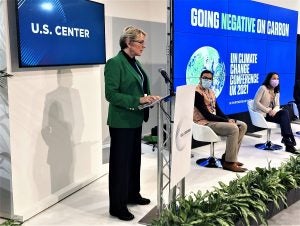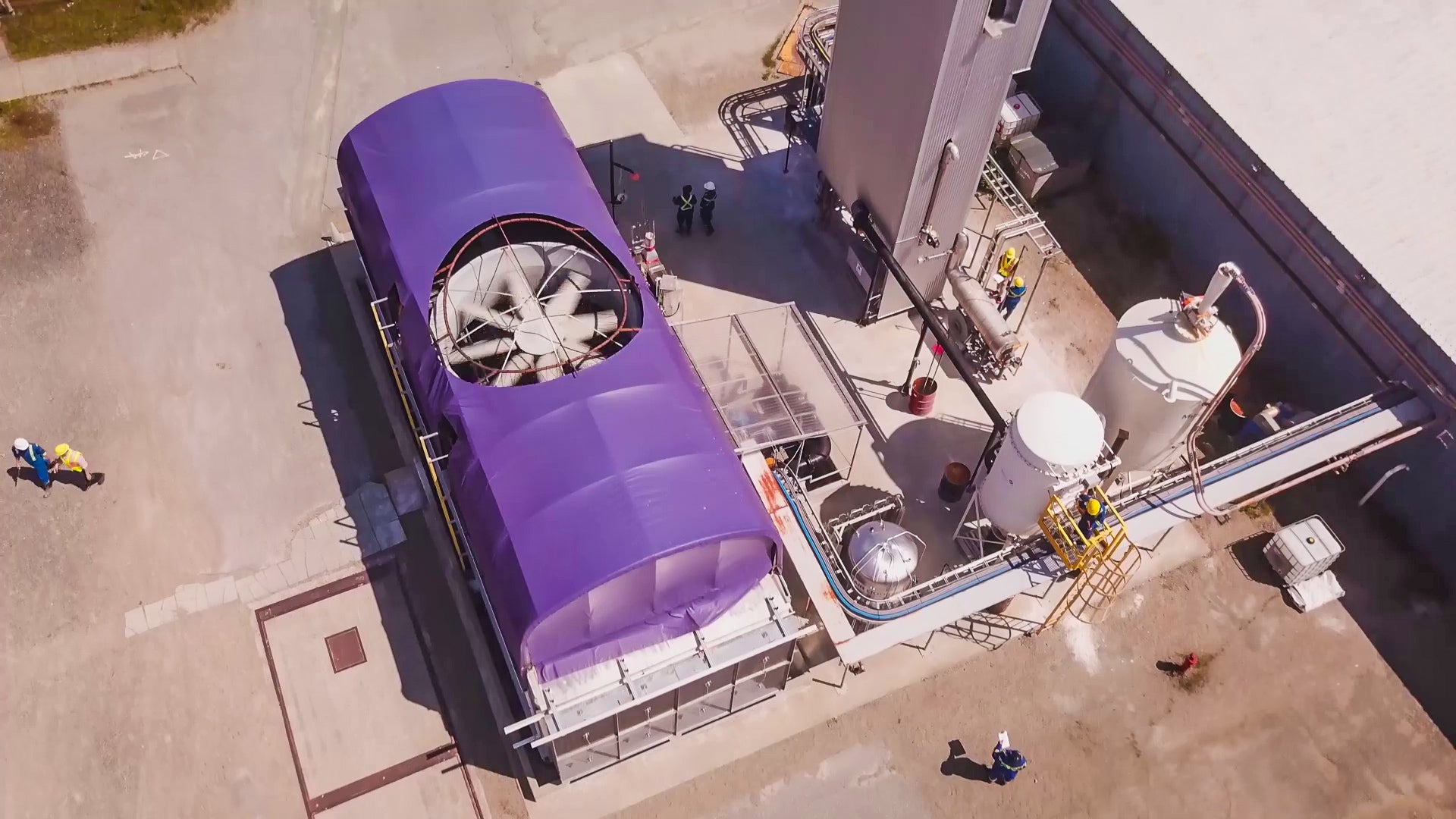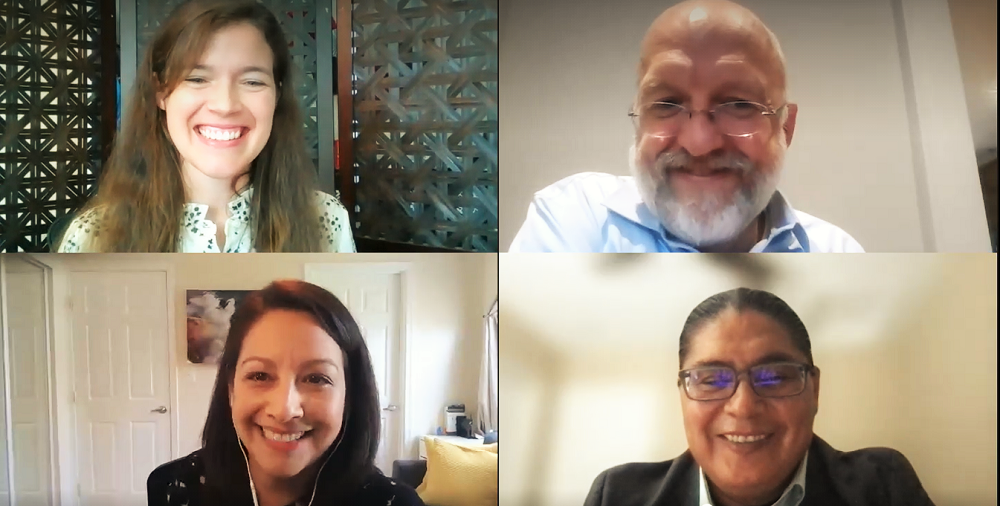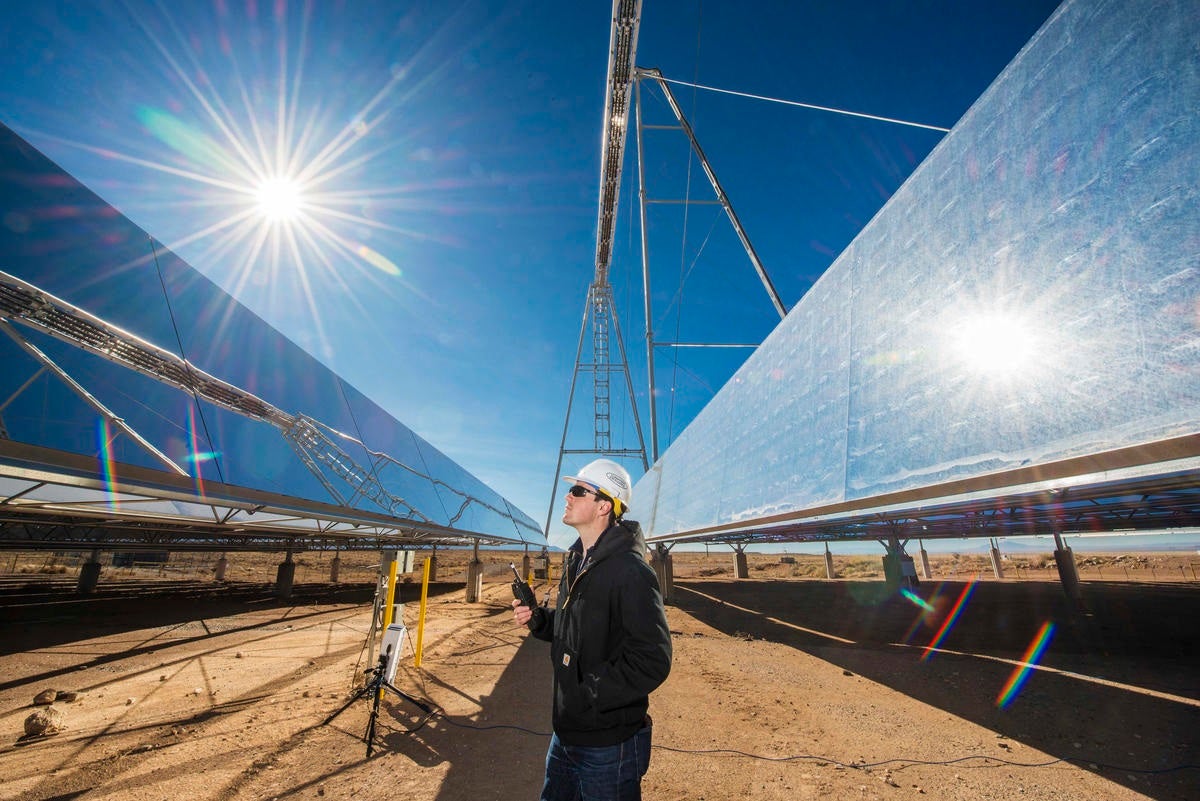
Why the Department of Energy launched an ‘Earthshot’ effort to draw down and store carbon pollution
This blog was co-authored by Sonali Deshpande, Program Analyst for U.S. Climate at EDF.
At a COP26 event on November 5, U.S. Secretary of Energy Jennifer Granholm announced a new, visionary effort to scale up solutions that can draw down and store carbon pollution from the atmosphere: The Carbon Negative Shot.
The Carbon Negative Shot follows two other Energy Earthshot announcements from DOE this year on hydrogen and long duration storage, all aimed at achieving breakthroughs in emerging climate solutions this decade. It’s the latest way that DOE is demonstrating how it can deliver on President Biden’s whole-of-government approach to combating climate change.
While we need to prioritize slashing carbon and methane pollution this decade to have a fighting chance of reaching net-zero emissions by mid-century — the target that gives us the best chance of avoiding the worst effects of warming — the science suggests that we might also need to scale up strategies to pull carbon dioxide out of the atmosphere, known as carbon dioxide removal or CDR.
DOE’s new Earthshot aims to fund research and innovation to achieve durable and scalable carbon removal under $100 per ton of CO2 within a decade. To be clear, that’s an ambitious goal: currently, a ton of direct air capture can cost multiples of that. However, some experts believe that these costs can fall significantly with an aggressive research agenda. And there are plenty of other challenges beyond cost: storing the CO2 permanently and safely, engaging with communities to ensure they inform and benefit from CDR, and ensuring CDR does not compete with renewable energy generation and other vital infrastructure for land use, and more.
To explore ways to maximize the value and impact of the Carbon Negative Shot, DOE gathered a range of voices for the launch at COP26, including remarks from Secretary of Energy Jennifer Granholm, and IEA Executive Director Fatih Birol; and a panel featuring, Assistant Secretary of Fossil Energy and Carbon Management and expert on CDR Dr. Jennifer Wilcox, Environmental Defense Fund President Fred Krupp, Microsoft’s Chief Environmental Officer Dr. Lucas Joppa; and moderated by Dr. Akshat Rathi, Climate and Energy Reporter for Bloomberg News.
Here are three key takeaways from the event:
1. We need to invest in a variety of carbon removal solutions to help us achieve net zero.
According to the IPCC, the National Academy of Sciences, and other leading scientists, many pathways to net zero involve removing several billion tons of carbon from the atmosphere every year by the 2050s. This could come from a mix of nature-based approaches, such as reforestation or wetlands restoration, or from emerging technologies like direct air capture (DAC). Even as we work to reduce emissions now, we’ll need to invest in researching, developing and demonstrating the CDR solutions we need down the road. As Fatih Birol said in his remarks, we need both the technologies we have today, like clean energy, electric vehicles, and more, and the “technologies that are under development but are not yet part of the market” to finish the job.
Part of the challenge is that we do not yet know which CDR approaches are likely to be the most promising, scalable and permanent. Currently, emerging technologies are expensive and resource-intensive. But that’s not a reason to shy away from investments in direct air capture or in broader CDR innovation — quite the opposite. Innovation today can provide us with a safe, responsible and affordable set of carbon removal tools tomorrow.
In an effort to boost the early CDR market, Microsoft recently made the largest ever corporate procurement of CDR, purchasing over a million metric tons from a variety of solutions — from a direct air capture facility in Iceland to soil regeneration projects in Latin America and the U.S. But as Lucas Joppa noted, that experience demonstrated how limited the options are for high-quality CDR projects and how “it’s clear that the supply needs to go way up, and the cost needs to come way down.” The Carbon Negative Shot appears to offer a promising approach — it doesn’t pick winners from the outset, rather it focuses on advancing core principles that are essential for making this a responsive and cost-effective climate tool.
2. Ensuring just, responsible and equitable deployment must be a priority.
While scaling up CDR can help us cross the goal line on net zero, it is not a substitute for serious and ambitious action to reduce emissions today. As Fred Krupp put it, “if some use [this Earthshot] to say ‘We can continue business-as-usual…’ all of us who support this initiative need to call them out because Priority One is reducing emissions.” CDR should not be a distraction from the rapid deployment of proven and cost-effective clean energy technologies, nor should it serve as a justification for fossil fuel companies to continue polluting activities which disproportionately harm low-income communities and communities of color.
Moreover, we need to use care to develop CDR wisely, and ensure that solutions are deployed in a just and responsible manner. It is essential that we start a robust, comprehensive and inclusive policy planning process that brings everyone to the table — not just the federal government or private companies, but all of the groups and communities impacted by both carbon removal technologies and climate change. According to Secretary Granholm, this means “working with local communities… to make sure they can see the benefits of this in terms of jobs and in terms of health,” and to make sure that communities most impacted by climate pollution “are first in line to receive the benefits of this” initiative.
3. CDR solutions can only serve our climate goals if they permanently remove and store carbon.
A key success factor for CDR solutions will be whether they can actually remove carbon from the air and store it — not just for a few years, but permanently.
As Dr. Jennifer Wilcox explained, the costs of taking carbon dioxide out of the atmosphere range significantly. And although many nature-based solutions, like storing carbon in soils, are currently on the lower-end of that cost range, we don’t know the full price tag of ensuring long-term storage with these solutions. For example, how much will it cost to manage the forests across a region in a way that reduces the risk of wildfires (and potential CO2 release)? That’s why she noted that “part of this work will be defining what metrics can monitor and verify storage on a long-term scale.”
As we continue to push CDR approaches and technologies down the learning curve, it is critical that we also develop methods for monitoring and verifying their ability to sequester carbon, as well as methods for preventing carbon from leaking out. A robust regulatory framework, including standards for the timeframes in which carbon must remain in the ground, can also ensure that CDR is effectively leveraged as a climate solution.
Learn more about carbon dioxide removal strategies in this EDF fact sheet.












